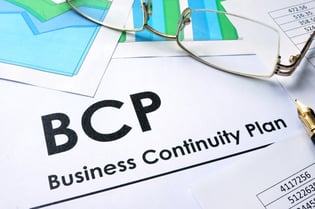
The United States now has nearly 30 million entrepreneurs.
While there are plenty of perks that come with owning your own business (such as making your own schedule), there are also a handful of obligations.
One of the most important is developing a business continuity plan in order to help get things back on track after an emergency.
Not sure where to start? Don’t worry, we’ve got you covered.
Let’s take a look at everything you need to know about business continuity management.
So…What Is It?
Unfortunately, disasters are a part of life. Whether man-made or natural, they can severely disrupt your business operations. So, you’ll need to plan for them.
Business continuity management is the process of developing an outline of what actions to take in order to recover from a business disaster as quickly as possible.
While it may not always be possible to recover lost revenue, you can minimize the amount of revenue that is lost.
What Does It Involve?
In general, you’ll need to include the following in your plan:
- Emergency contact information for individuals both on-site and off-site
- Communication strategies to effectively organize your employees
- A list of your company’s vital processes that must be prioritized during and after a disaster
- Roles and responsibilities for everyone involved in disaster recovery
- A list of temporary business locations
- Instructions on managing or restoring your company’s data
As you can see, a business continuity plan must be fairly thorough in order to mitigate the amount of damage done to your productivity.
How Do I Decide If I Need to Make One?
No matter what industry your business is involved in or how large your company is, you need to take business continuity management seriously.
The above factors (including the geographical location of your business), however, do influence how complex your plan is.
For example, let’s take a look at a brief scenario.
David owns a small company in the Midwest that sells athletic apparel to people who are overweight and trying to get into shape. His running shoes have extra comfort to minimize joint pain while walking, jogging, or running.
One day during the summer, an F3 tornado strikes the city where his office is located. While his building was not hit directly the surrounding debris caused enough damage to his office to prevent his employees from safely returning to work.
It also severely damaged the electrical systems of his office building, leaving him without access to his archived data that was stored there.
Without a business continuity plan, David finds himself scrambling to keep his operations running. However, he is quickly overwhelmed by these obligations and his business productivity vastly suffers for the next three months.
This is just one of the thousands of possibilities that business owners can find themselves in if they forego proper disaster planning.
How To Develop A Proper Plan
While creating a disaster plan can seem intimidating to most entrepreneurs, it’s far simpler than many may expect.
Let’s dive in.
Make Things as Easy as Possible
The easier your plan is to understand and execute, the far greater your success will be when using it. This is especially true for larger companies with a significant amount of upper-level employees.
A quick way to make your plan easier to follow is to use graphs, pictures, and diagrams whenever you can. This will help break up large chunks of text and clarify any particularly confusing information.
Be Generous When Planning Your Recovery Time
After a disaster, we all want to get things running smoothly as soon as possible.
But, depending on a handful of factors (your industry, the damage, etc.), it may be weeks or even months before you get back to where you were in terms of productivity.
So, you’ll need to budget for more time than you want or expect while recovering from a disaster. This will give you some extra breathing room while your company gets itself together.
Train Those Who Need Training
It’s not unlikely that key members of your team will need to handle roles they may not be experienced in. So, you’ll need to train them.
For example, you may need an account manager who regularly handles 3 of your 10 client accounts to handle all of your client accounts after a disaster strikes. Make sure they’re up to speed on this responsibility after your plan is created.
Additionally, take the time to walk everyone on your recovery team through their individual roles and how they synergize with the roles of other employees.
The more you can prepare your employees, the more efficiently they’ll function.
Test Your Plan
Simply having a plan isn’t enough. You need to have a plan that works.
So, organize a day (or a few) where everyone on your recovery team performs their given roles in order to see how quickly they can complete their responsibilities.
You can also see how they communicate with each other and keep an eye out for any internal communication problems that may arise.
Be sure to test your plan again in the future after making any substantial changes to it.
Understanding Business Continuity Management Can Seem Difficult
But it doesn’t have to be.
With the above information about business continuity management in mind, you’ll be well on your way to developing a plan that will get you back up and running after almost any scenario.
Want to learn more about why your business needs a disaster recovery plan? This article has plenty of useful info.
Ludovic Levivier
Founder & CEO, LINC Project, INC. a Managed Service Provider in New York and San Francisco



.png?width=306&height=50&name=Logo_width.jpg(2).png)


